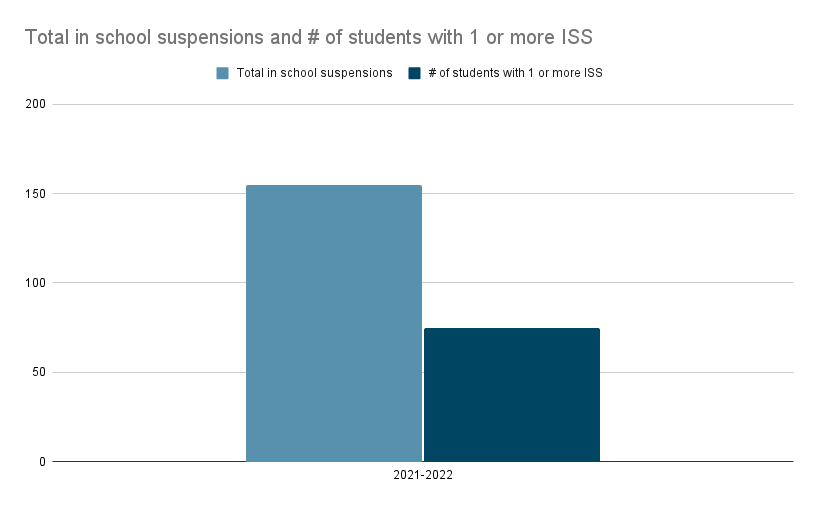The Roberts Court And Religious Freedom: Examining The Blurring Lines Of Church And State

Table of Contents
Key Cases Shaping the Roberts Court's Approach to Religious Freedom
The Roberts Court's jurisprudence on religious freedom has been significantly shaped by several landmark cases, each pushing the boundaries of the First Amendment's protections.
Burwell v. Hobby Lobby Stores, Inc. (2014): Religious Exemptions and Corporate Personhood
Burwell v. Hobby Lobby centered on the Affordable Care Act's (ACA) mandate requiring employers to provide contraception coverage in their health insurance plans. Hobby Lobby, a for-profit corporation, argued that this mandate violated its owners' sincerely held religious beliefs. The Court, in a 5-4 decision, ruled in favor of Hobby Lobby, granting religious exemptions to for-profit corporations under the Religious Freedom Restoration Act (RFRA).
- Key arguments for the ruling: The ruling emphasized the religious freedom of the owners and argued that the mandate imposed a substantial burden on their religious exercise.
- Key arguments against the ruling: Critics argued that the ruling created a dangerous precedent, potentially allowing corporations to evade other laws based on religious objections, and raised concerns about the implications for employee healthcare access.
- Ongoing legal ramifications: The decision continues to be debated and litigated, with ongoing challenges to its scope and application in various contexts. The case significantly expanded the concept of religious exemptions for corporations, impacting discussions surrounding religious freedom in the workplace.
Masterpiece Cakeshop, Ltd. v. Colorado Civil Rights Commission (2018): Religious Freedom vs. Anti-Discrimination Laws
Masterpiece Cakeshop involved a Colorado baker who refused to create a wedding cake for a same-sex couple, citing his religious objections to same-sex marriage. The Supreme Court's decision was narrow, focusing on the perceived hostility shown by the Colorado Civil Rights Commission towards the baker's religious beliefs. While not directly addressing the core issue of religious objections to same-sex services, the ruling left open the possibility of future challenges based on similar claims.
- Dissenting opinions: Justices highlighted the importance of anti-discrimination laws and the potential for businesses to discriminate based on religious beliefs.
- Ongoing debate: The case fueled the ongoing national conversation about the balance between religious freedom and LGBTQ+ rights, raising questions about access to services and the potential for discrimination.
- Impact on businesses and consumers: The ruling's ambiguity has created uncertainty for businesses and consumers alike, leaving many unsure about the legal implications of similar situations.
Carson v. Makin (2022): Public Funding and Religious Schools
Carson v. Makin addressed the issue of public funding for religious schools within Maine's tuition assistance program. The program allowed parents to use state funds to send their children to private schools if their district didn't offer a public secondary school. However, the program excluded schools that provided religious instruction. The Supreme Court ruled that excluding religious schools from this program violated the Free Exercise Clause.
- Establishment Clause implications: The ruling raises concerns about the separation of church and state, as it allows public funds to support religious education.
- Arguments for and against public funding: Supporters argue that parents should have the freedom to choose religious schools for their children, while opponents raise concerns about the potential for public funds to be used to promote religious doctrines.
- Potential future legal challenges: This decision is likely to lead to further legal challenges and debates about the appropriate role of religion in public education.
The Shifting Landscape of the Establishment Clause
The Roberts Court's decisions have significantly altered the interpretation and application of the Establishment Clause.
Increased Scrutiny of Government Actions Pertaining to Religion
The Court's rulings have led to increased scrutiny of government actions, even those seemingly neutral, if they are perceived as either favoring or disfavoring religion. This heightened scrutiny has implications for a wide range of government policies and practices.
- Examples of challenged laws/policies: Cases involving religious displays on public property, government funding for religious organizations, and religious exemptions from generally applicable laws all illustrate this trend.
- Arguments from both sides: Arguments revolve around the interpretation of the Establishment Clause, with differing views on the appropriate level of government entanglement with religion.
- Implications for future government actions: Governments now face increased legal challenges when creating or enforcing policies related to religion, necessitating careful consideration of the Establishment Clause implications.
The Role of Religious Displays on Public Property
The Court's approach to religious displays on public property has been inconsistent, leading to ongoing legal battles and disagreements. The issue highlights the tension between the Establishment Clause and the free exercise of religion.
- Key cases and outcomes: Several cases involving nativity scenes, Ten Commandments monuments, and other religious displays have reached the Supreme Court, with varying outcomes that often depend on the specific context.
- Evolving legal standards: The Court hasn't established a clear and consistent standard for assessing the constitutionality of religious displays on public land, further fueling the debate.
- Ongoing debate: The debate continues about what constitutes impermissible government endorsement of religion versus acceptable public acknowledgment of religious traditions within a pluralistic society.
Criticisms and Debates Surrounding the Roberts Court's Religious Freedom Jurisprudence
The Roberts Court's approach to religious freedom has faced significant criticism.
Concerns about the erosion of the separation of church and state
Many legal scholars and commentators argue that the Court's decisions have significantly weakened the separation of church and state, potentially leading to increased religious influence in government and public life.
- Arguments from legal scholars and commentators: Critics point to a pattern of rulings that seem to favor religious claims over other constitutional rights and concerns about government neutrality.
- Concerns about religious discrimination: There are concerns that these decisions could lead to discrimination against individuals and groups who do not adhere to majority religious beliefs.
- Impact on minority religions: The implications for minority religions and those holding non-religious beliefs are also significant, raising concerns about fairness and equal treatment under the law.
The ongoing tension between religious freedom and other constitutional rights
The Court's decisions have highlighted the inherent tension between religious freedom claims and other constitutionally protected rights, notably LGBTQ+ rights and reproductive rights. Balancing these competing interests remains a major challenge.
- Examples of cases illustrating this tension: Several cases involving religious objections to same-sex marriage and abortion have directly illustrated this conflict.
- Proposed solutions and compromises: Finding solutions that respect both religious freedom and other constitutional rights requires careful consideration and thoughtful compromise.
- The importance of finding common ground: Open dialogue and a willingness to find common ground are essential to navigate the complex intersection of these fundamental rights.
Conclusion
The Roberts Court's interpretation of religious freedom under the First Amendment has profoundly impacted the relationship between church and state in the United States. Key cases like Burwell v. Hobby Lobby, Masterpiece Cakeshop, and Carson v. Makin have significantly reshaped the legal landscape, blurring the lines between religious liberty and government neutrality. These decisions have sparked intense debate concerning the separation of church and state, the balance between competing constitutional rights, and the potential for religious discrimination. The ongoing controversies surrounding the Roberts Court's religious freedom jurisprudence underscore the need for continued dialogue and careful consideration of the complex issues involved. Learn more about the Roberts Court's approach to religious freedom by researching these landmark cases and engaging with the ongoing scholarly discourse on this crucial topic. Continue the conversation about the delicate balance between religious freedom and the separation of church and state.

Featured Posts
-
 Wzyr Altjart Alsewdy Yezz Alteawn Alaqtsady Me Adhrbyjan
May 02, 2025
Wzyr Altjart Alsewdy Yezz Alteawn Alaqtsady Me Adhrbyjan
May 02, 2025 -
 Torgovlya Lyudmi V Sogde Prinyaty Vazhnye Resheniya Na Vstreche
May 02, 2025
Torgovlya Lyudmi V Sogde Prinyaty Vazhnye Resheniya Na Vstreche
May 02, 2025 -
 New Incentive Ponant Offers Agents 1 500 Flight Credit For Paul Gauguin Sales
May 02, 2025
New Incentive Ponant Offers Agents 1 500 Flight Credit For Paul Gauguin Sales
May 02, 2025 -
 Why Men Shave Their Eyelashes A Growing Trend
May 02, 2025
Why Men Shave Their Eyelashes A Growing Trend
May 02, 2025 -
 School Suspensions Harmful Effects And Effective Discipline Strategies
May 02, 2025
School Suspensions Harmful Effects And Effective Discipline Strategies
May 02, 2025
